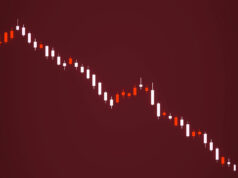Central bank sees rate cut impetus from S&P rating upgrade

THE BANGKO SENTRAL ng Pilipinas (BSP) sees room to “move faster” in easing monetary policy following the sovereign debt rating upgrade last April from S&P Global Ratings, the central bank chief said in an ABS-CBN News Channel (ANC) interview, noting that the domestic economy likely grew “slightly higher” than six percent in the first quarter of the year.
On the sidelines of Asian Development Bank’s annual meeting in Nadi, Fiji on Friday, BSP Governor Benjamin E. Diokno said the recent credit rating upgrade is “another factor” that will be considered during the Monetary Board’s (MB) May 9 policy meeting — its third for 2019. “I think the (credit upgrade) is another factor that we can now move faster this time,” he said.
S&P Global Ratings raised the country’s credit rating to “BBB+” from “BBB” — just a notch away from “A”-level rating and the first upgrade since 2013 when the country first bagged successive investment-grade ratings — citing above-average growth and strong external and fiscal position which have boosted the country’s economic profile.
A higher credit rating can enable the government and private companies in the country to borrow funds abroad at cheaper cost.
Reiterating pronouncements after he assumed his post in early-March, Mr. Diokno added that reductions in policy rates and banks’ reserve requirement ratio (RRR) are “inevitable.”
“It is inevitable that we will have to cut both the reserve requirement ratio and the interest rate,” he said. “We’re starting from the previous year’s 175-point increase. That’s not normal,”
The MB kept benchmark rates steady in its first and second policy reviews on Feb. 7 and March 21 at a 4.25-5.25% range, coming from a 175-basis-pointl cumulative hike in interest rates through five consecutive meetings last year, in an effort to quell inflation.
Headline inflation slowed for a fifth consecutive month to a 15-month-low of 3.3% in March from a nine-year-high 6.7% in September and October last year and a 5.2% average in 2018.
The BSP expects inflation for the month of April to have settled within a 2.7-3.5% range, as a continued decline in rice prices and the peso’s appreciation offset upward pressures from higher fuel and electricity costs. It expects inflation to average three percent this year. The Philippine Statistics Authority will report April inflation data on May 7.
The central bank also held off cutting banks’ reserve requirement ratio (RRR), even as Mr. Diokno has described the already-reduced 18% RRR as still “very high”, citing “room for… one percentage point [cut] every quarter for the next four quarters.”
Mr. Diokno also told ANC on Friday that gross domestic product (GDP) likely grew “slightly higher” than six percent in the first three months of the year, propelled by election spending, construction, investments and manufacturing. The PSA will report first-quarter GDP data on May 9.
“It’s an election year. (Also), even if there’s not much construction, there’s what we call accounts payable or the payment for things we’ve done before. Private investment is quite active,” Mr. Diokno explained.
GDP growth has been hovering around six percent since the fourth quarter of 2017 (6.6%), clocking in at 6.5%, 6.2%, six percent and 6.3% in last year’s first to fourth quarters, respectively.
The government last March reduced its 2019 GDP growth target to 6-7% from 7-8% originally in the face of delayed enactment of the 2019 national budget, which was slashed by P95.3 billion to P3.662 trillion when it was signed into law four months late in mid-April.
The delay in the 2019 budget prevented the government from front-loading investments in big-ticket infrastructure projects during the best time of the year to construct: the first quarter. Public works spending has been on hold for a 45-day period starting March 29 ahead of the May 13 legislative and local mid-term elections.
Mr. Diokno’s estimate mirrored projections made by two state economic managers earlier this week. Socioeconomic Planning Secretary Ernesto M. Pernia said he expects first-quarter GDP at “above six percent,” while Trade and Industry Secretary Ramon M. Lopez gave a 6.2-6.4% range. — Karl Angelo N. Vidal



